Defects of great artists - fatal pathology or the real cause of the masterpieces?
• Defects of great artists - fatal pathology or the real cause of the masterpieces?
Uncover the mystery of the painting masterpieces are trying not only art, but also ... ophthalmologists! It is believed that some of the features of style and transmission colors - just a consequence of disease. Scientists have repeatedly tried to determine the diagnosis of the great masters of painting in their paintings. And they came to the conclusion that Rembrandt, Van Gogh, Monet, Degas, El Greco and other artists were serious problems with vision!
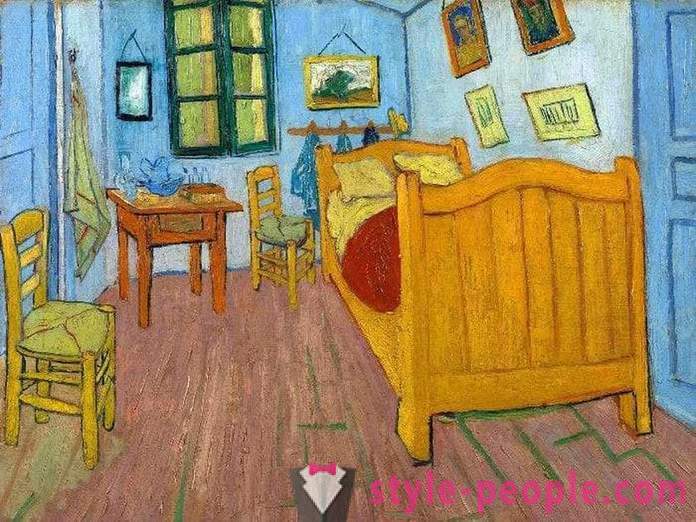
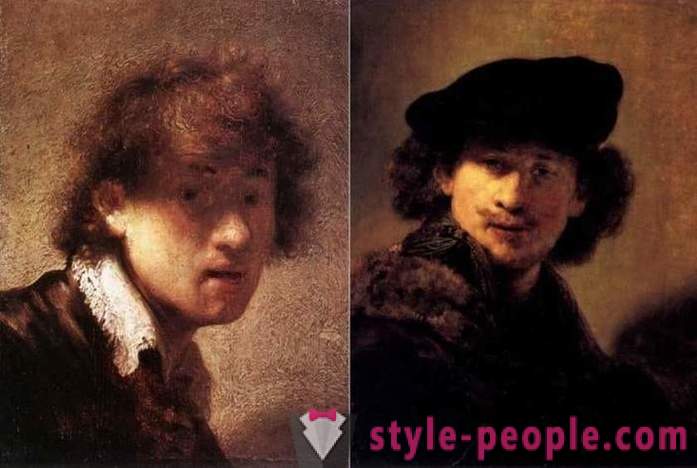
Rembrandt. Self-portraits in 1629 and 1634.

Rembrandt. Self Portrait 1658 Fragment
A person's ability to perceive three-dimensional space is determined by the binocular (stereoscopic) vision. However, in order to depict a three-dimensional space on a plane, artists use monocular vision, which closes one eye. Monocular can be pathological. Neuroscientists at Harvard Medical School M. Livingston and B. Conway compared 36 self-portraits of Rembrandt and came to the conclusion that the artist's eyes almost imperceptibly mow, one looking at the viewer, and the second - a little to the side. When one eye does not keep focus, this shows undeveloped stereoscopic vision. Perhaps this was part of Rembrandt's mastery.

Claude Monet. Japanese bridge 1899
It is known that the French impressionist Claude Monet suffered from cataracts. Ophthalmologists believe that this defect was the cause of the softness of lines and color palette of the artist. PhD A. Sergienko claims that the paintings Monet can see how the disease progressed: "When a cataract lens gradually becomes cloudy, as if the eyes are looking through cellophane tape or misted glass. Over time, a person loses the ability to see the cool tones. Blue, dark blue paint on the canvases of Monet gradually replaced by yellow and brown. It is in the yellow-brown color sees the world cataract patients. "

Claude Monet. Japanese bridge, 1918-1924
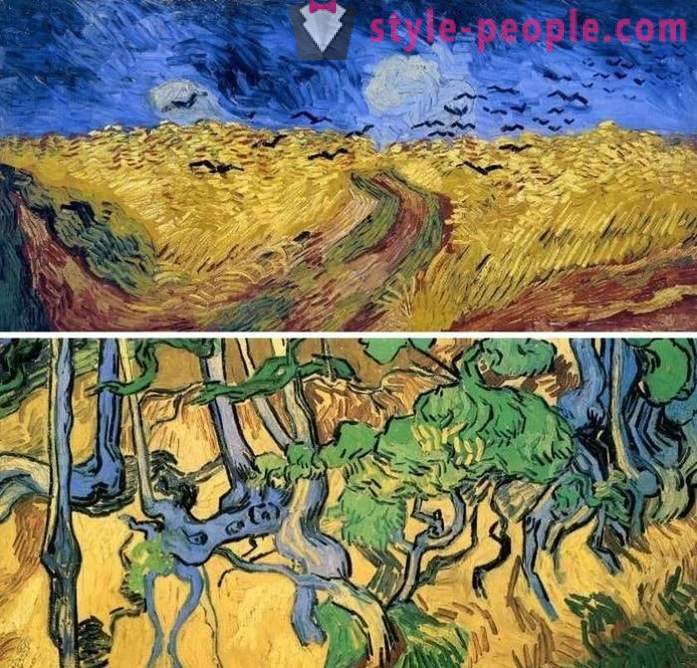
Van Gogh. Above - Wheatfield with Crows, 1890. Below - the roots and trunks 1890
The predominance of yellow color is typical for Van Gogh paintings. Scientists are sure that such features were due to the use of drugs for epilepsy. The structure had prescribed digitalis included poisonous plants used in medicine - foxglove. Overdose leads to defects in vision, in which the yellow color becomes particularly emotional strength in color perception. This disease is called xanthopsia. In addition, Van Gogh addiction to absinthe gave the same effect: alkaloids of this drink three times reinforce the perception of yellow.

Van Gogh. Wheatfield with reaper and the sun 1889
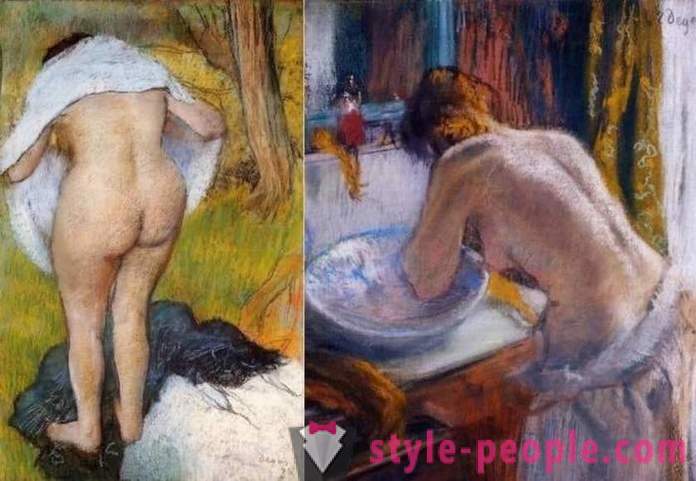
Edgar Degas. Left - * girl * wipes, 1885. Right - * * The morning toilet, 1884-1886
Australian neurosurgeon H. Dan says that Monet, Renoir, Cezanne, Degas, Pissarro and Matisse are united by one common problem - short-sightedness. That is the defect of a scientist makes a special softness lines and the presence of "trembling" of colors in their works. Critics are skeptical of such claims and stylistic features explain the aesthetics of Impressionism.

Edgar Degas. Blue Dancers 1897
Ophthalmologist M. Marmor concluded that Edgar Degas suffered from progressive deterioration of vision, so in the last 30 years of life has become increasingly write pastel shapes in his paintings became larger, the line - more energetic and expressive. In this case, the artist himself his later work seemed more natural and smooth on the palette than viewers with normal vision.
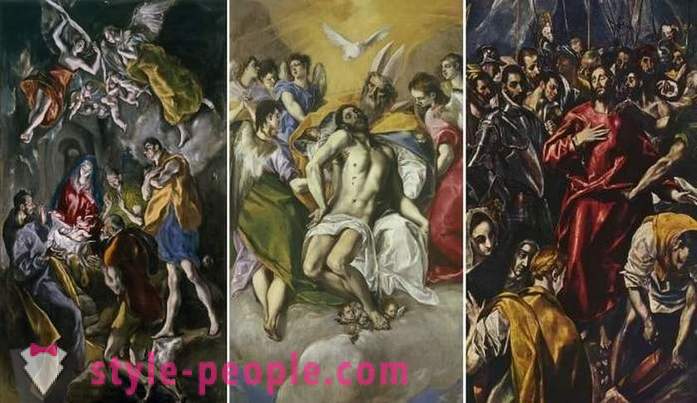
El Greco. Adoration of the Shepherds, 1612-1614. Holy Trinity, 1577. Removing clothes with Christ, 1577-1579
Signs of myopia and astigmatism (eye disease, distorting the image like a distorting mirror) ophthalmologists are in the works El Greco. People with astigmatism deformed shape of the lens - it becomes round and elongated. The manner of El Greco's elongated figures depict prompted scientists to think that it can be triggered by a defect of vision.
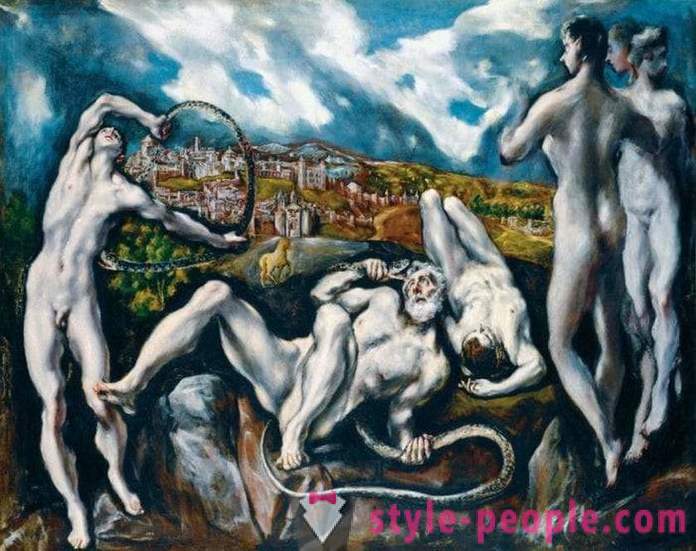
El Greco. Laocoon, 1610-1614
Margaret Thatcher called expressionist Francis Bacon, "a man who paints those dreadful pictures". Disfigured face and deformed beyond recognition to the body in his paintings is indeed often causes the viewer disgust. Scientists suggest that the artist suffered dismorfopsiey - disease, which manifests itself in distorted shapes and sizes of visible objects.

Francis Bacon. Above - Three Studies for Figures at the foot of the crucifix, 1944. Below - In Memory of George Dyer 1971













































